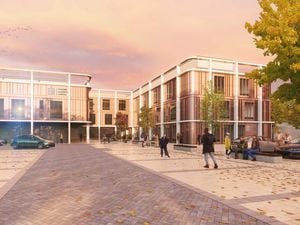A growing problem
GUERNSEY’S quarterly population and employment bulletins always provide a fascinating insight into what is happening in the island, both demographically and economically.

The one released at the beginning of May was no exception, though whether it was good news or bad news is subjective and depends on where you stand on the politics of population growth.
Those who know me will be well aware of where I stand. I think that there are quite enough of us living on 24.5 square miles in the middle of the sea. In fact probably a few too many – but no, I am not volunteering to leave, sorry about that.
In today’s climate of populist and nationalist politics around the world I always feel the need to stress that I am in no way being xenophobic. I love diversity and my only message to incomers is ‘welcome, welcome and thrice welcome – thank you so much for all that you add to our culture, our skills base and our lifestyle’.
All I am saying is that Guernsey is one of the most densely populated territories in the world, with limited and dwindling green spaces, congested roads and increasing urbanisation. So it is purely in the interests of maintaining the quality of life for all Guernsey residents, whether indigenous or incomers, that I worry greatly about our population growing yet further.
With this in mind I would ideally like the number of incomers to roughly balance the number of emigres – with a bit extra added on to allow for the natural decline in our population as we see fewer births than deaths.
Of course the States voting for such a situation is a bit like them voting for fine weather at weekends. Our population size responds far more to economic stimuli than it does to any government intervention.
That is why, if you look at Guernsey’s demographic history, you will find only two causes of downturns in our population. The first being war and the second being economic difficulty. Even these have tended to be short-lived and the relentless direction of travel of Guernsey’s population numbers has been upwards. The latest bulletin suggests that trend may have been resumed.
What it shows is the fastest annualised level of population growth for some years at 325. Those who are relaxed about population levels will point out that the number of us living here is still 500 less than the all-time high it hit early on in this decade. They will also point out that 325 extra people really isn’t that many and can surely be absorbed without too much difficulty.
All that is quite true, but if the growth continues at the current rate, then in 20 years’ time there will be 70,000 of us living in Guernsey, rather than the 63,000 today. If the current rate of acceleration continues, then it could be far higher.
I accept that these are big ‘ifs’ and instead we could see economic decline leading to population decline. My critics on population issues often ask if that is really what I want. Of course I don’t.
I want us to try to achieve the Holy Grail of a buoyant economy with a roughly stable population. Not easy, I grant you, but worth striving for. However, I have done that topic to death before so I won’t revisit it today.
What else does the bulletin tell us?
Well, it tells us that Guernsey’s so-called working age population (ages 16-64) went up for the first time for a while. Some people have interpreted that as meaning that Guernsey’s working population has risen for the first time in years. That couldn’t be more wrong. In fact, the number of people actually working in Guernsey has shown a healthy growth trend over recent years but, for most of that time, the growth has been driven by a higher rate of economic activity amongst 16- to 64-year-olds and a small but significant increase in the number of workers who are aged over 65.
The latter is now getting on for a thousand. To be precise, it was 854 in the middle of last year. Expect a big leap in this category when the age of qualification for the state pension starts to go up from the start of next year.
I would argue that in many ways such sources of extra workers are far more sustainable and better for our dependency ratio than just increasing our ‘working age’ population. In fact the latter is really just kicking the can down the road because those people will grow old in their turn and we can’t keep growing our population to support them. Well, we could if we didn’t mind becoming a rather chillier version of Hong Kong but that is surely not our vision for Guernsey’s future.
The other fascinating statistic (well, for anoraks like me anyway) is that there are actually fewer people in Guernsey aged over 85 than there were two years earlier.
Of course in time the number of people in this age bracket will mushroom as the ‘baby boomers’, who are now in their early 70s, start to swell their ranks. That said, it is still a surprising statistic for those of us who have lived most of our lives against a backdrop of constantly rising life expectancy. I bet nine out 10 people asked in the middle of 2016 whether they thought that in two years’ time there would be more or fewer people aged over 85 living in Guernsey would have answered ‘definitely more’.
So is this just a blip or the start of a trend of longevity levelling off? Who can say? It is far too early to be sure. If it is a trend, then is that a good or bad thing? That rather depends. From the point of view of the sustainability of pension funds and health or social care service provision it would certainly be a good thing.
From the point of view of those of us who are hoping to make old bones it most definitely would not be.





